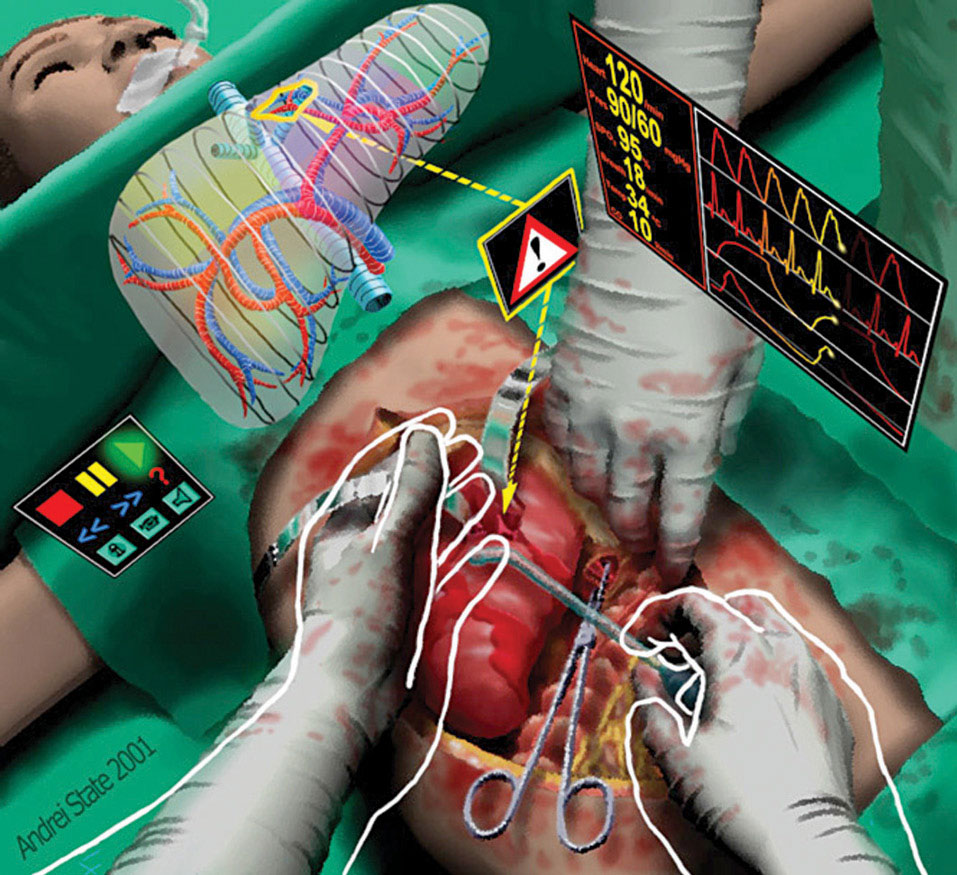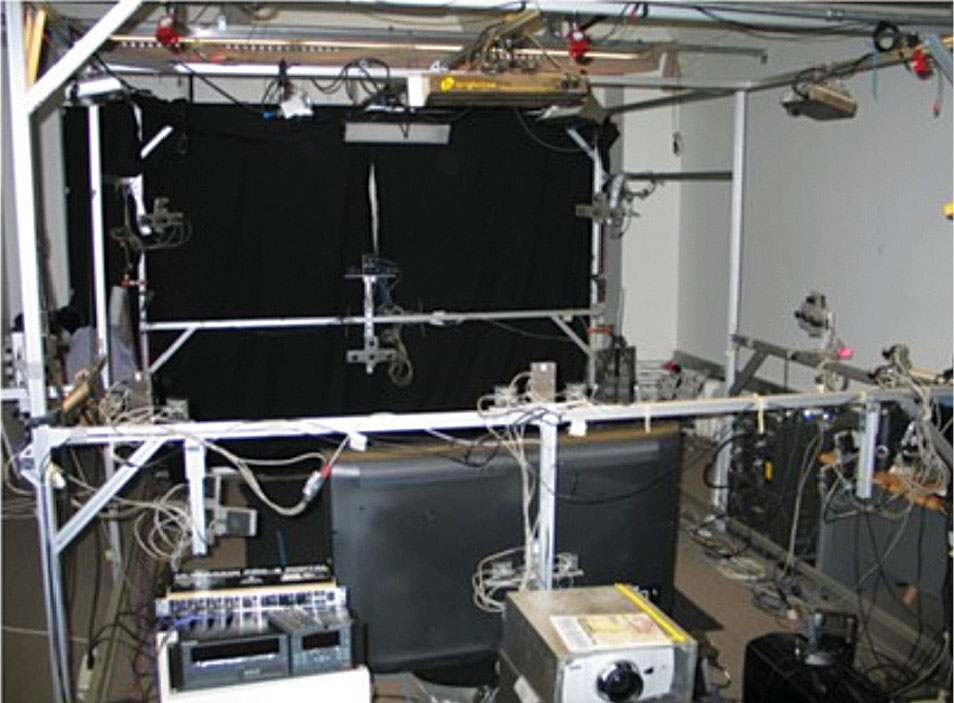Images on the screen were split and polarised to create a different image for each eye. The goggles then combined these images so that the brain recognised only one 3D image. This process was similar to how 3D movie glasses worked. Early experiments experienced some problems, often encountered during normal videoconferencing. Scenes being projected were refreshed three times per second, which created an unsteady image. If that rate could be improved to ten frames per second, it would create a smooth projected image that would almost be like looking at another person through a window. Scientists have been working on new technologies to support this type of communication. Here are some components and aspects of the new technologies:


Tele-cubicle. By means of which users communicate, a tele-cubicle consists of a stereo-immersive desk surface and two stereo-immersive wall surfaces (Fig. 2). These three display surfaces join to form a corner desk unit. Walls appear as windows to other users’ environment, while desks join together to form a virtual conference table in the centre. This allows realistic inclusion of tele-immersion into the work environment as it consumes the average amount of desk space.
The Internet2. This will replace the current Internet infrastructure. It is a consortium made up of the USA government, industry and academia (over 180 universities) that was formed with the purpose of creating the Internet of the future. Good quality tele-immersion needs about 1.2Gbps. This new network will have a higher bandwidth and speeds 1000 times faster than today’s Internet. This high bandwidth and speed network is necessary to transfer large amounts of data that tele-immersion will produce.
Display technologies. Stereo-immersive displays would have to present a clear view of the scenes being transmitted. Haptic sensors would allow people to touch projections as if these were real. And, desktop supercomputers would complete trillions of calculations needed to create a holographic environment. Another possibility to support these environments would be a network of computers that split the total power.
Application areas
Tele-immersion can benefit a host of areas from being able to meet relatives you are unable to visit to treating very remotely-located critical patients. Here are the main application areas:
In medicine. Tele-immersion can prove to be tremendously helpful and even life-saving in the area of medicine. Traditionally, medicine has been taught and practiced face to face. However, with tele-immersion, 3D surgical learning for virtual operations is now possible. In times to come, we will be able to tele-immerse a surgeon into an operation theatre to carry out a surgery (Fig. 3).
This could imply that many lives could be saved, especially if there are patients who are in dire need of a certain process or equipment that is not available at their location. Some loose ends that need to be tied are the legal implications in case of any system or tele-immersed surgeon failure. Also, since the doctor carrying out the operation is actually not physically present, how effective will he or she be? Will the doctor be able to gauge what is transpiring in the back-end of medical services? Will the patient feel comfortable going through a critical procedure in this manner?
High-resolution 3D patient images have now become quite common, and it is vital to make this patient-specific data quickly available and usable to many specialists at various geographical locations. While web based systems can provide volume or surface rendering of medical data over networks with low fidelity, these are not able to manage stereoscopic visualisation or huge datasets effectively. This is where state-of-the-art tele-immersion techniques and high-speed networks are required to produce an environment for geographically-distributed clinicians to share these huge datasets in real-time basis.










